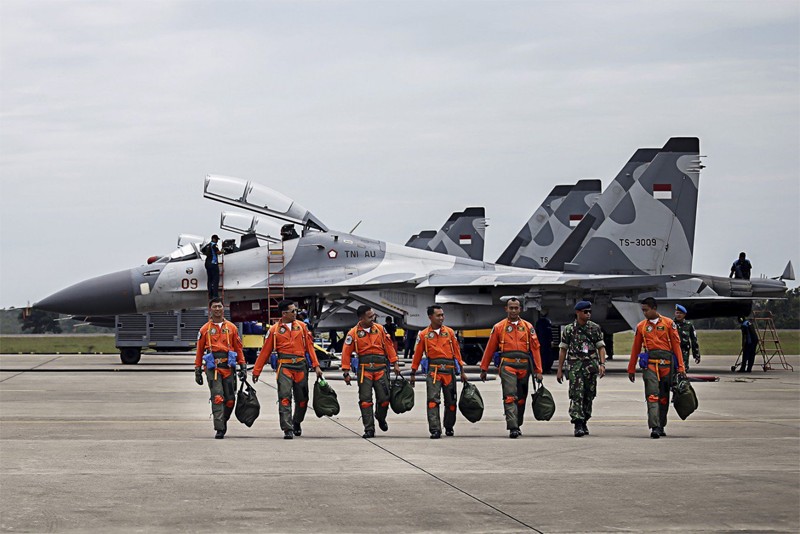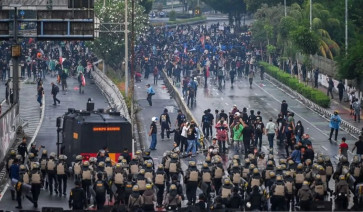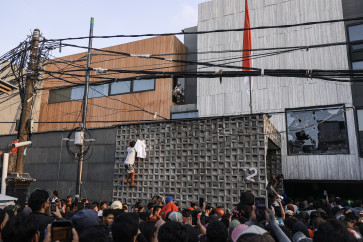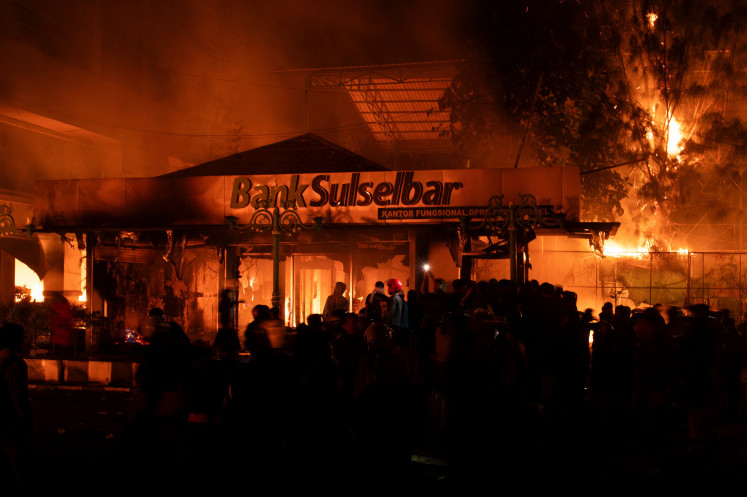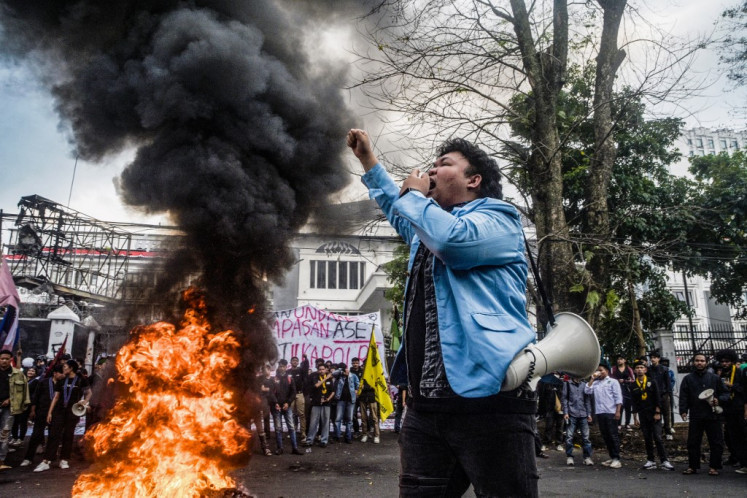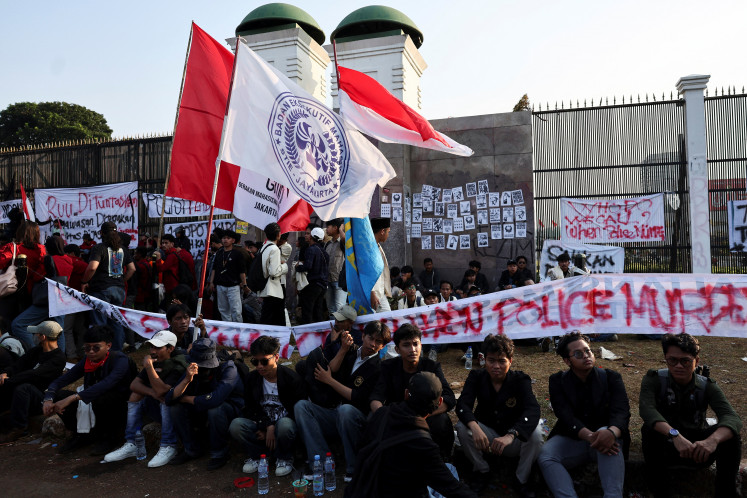Popular Reads
Top Results
Can't find what you're looking for?
View all search resultsPopular Reads
Top Results
Can't find what you're looking for?
View all search resultsWhy drones are not enough: A serious air force for the 21st century
Discussing if new fighters are worth getting or arguing if drones should replace them is a fallacy: they are both necessary, but the platform itself is not the key.
Change text size
Gift Premium Articles
to Anyone
On April 18 Gilang Kembara published a commentary in this newspaper critiquing the purchase of the Sukhoi Su-35 on a basis of human and economic costs, and argued for buying drones instead. His framing is entirely correct: even the fighter with the lowest per flight-hour cost, the JAS39 Gripen, is almost triple the amount of a MQ-9 Reaper drone. Simply put, drones keep the platform cost, flight-hour cost, and the risk to pilots down.
However, and where I disagree with Kembara, is his preposition that instead of buying new fighters the Air Force should buy drones. Both his argument and the Air Force’s purchase of the Su-35 betray a misunderstanding of the trajectory of the technology and organization of modern and future airpower.
To choose a platform on cost alone is a red herring – a distraction from deeper questions that need to be addressed by any air force trying to enter the 21stcentury. First, it neglects the fact that fighters and drones fulfil vastly different roles.
Second, while it rightly lifts the issue of costs of flight hours and platforms, it does not consider the massive shifts in infrastructure that would be required to support such a force.
Third and last, it commits a fallacy in the future development of air forces, namely an overreliance on specific platforms instead of larger systems. If the Indonesian Air Force wants to be a serious fighting force in the 21stcentury, it needs to adopt a systems approach instead of platforms, containing a mix of different capabilities and aircraft, both manned and unmanned.
There are four roles that air power today is required to fulfil that are relevant to the problem that Kembara brings up. There are air-to-air and air-to ground missions, or to shoot down planes and bomb enemies, which are the core of modern multi-role fighter jets. There is also air policing, which becomes increasingly relevant as the amount of planes trafficking Indonesia’s airspace grows and the hopes of gaining full control of their airspace continue. Finally, there is also the issues of intelligence, surveillance, and reconnaissance (ISR) over both land and sea.
Today, drones only operate in ISR and ground-strike roles, and cannot replace fighter jets with the current technology – air-to-air and air policing remain out of the capability of drones for the foreseeable future. Strike missions have increasingly been conducted by drones, most famously targeted strikes against militants in Pakistan.
They have also been conducting close air support to forces on the ground in Afghanistan, but this deserves a caveat: in these cases the drones were already overhead, and are simply too slow to be dispatched to support forces in a firefight on short notice, nor do they carry a lot of munitions. This stands in contrast to the fast moving F-16s, which will not be replaced by drones anytime soon.
The other core mission that Kembara hopes drones will take over in Indonesian service is maritime surveillance, and rightfully so. In the US Navy, the venerable P-3C Orion is being replaced by a manned-unmanned team of new P-8 Poseidon manned aircraft and unmanned MQ-4C Tritons. While the MQ-4C cannot replace the payload capacity and endurance of the P-8, which is a derivativeof the commercial Boeing 737, they are instead used as scouts and surveillance platforms for the larger and more expensive manned aircraft, increasing overall efficiency.
But using drones this way requires a large infrastructure behind the scenes, primarily seen by the MQ-1 Predator and MQ-9 Reaper as suggested by Kembara. While the ground control stations that control the drones are not cheap, nor are they prohibitively expensive.
The truly expensive part is the communications network required to actually “talk” to the drones. To operate over widespread oceans and ranging landscapes, such as thearchipelagic Indonesia, the most effective way to control the drones would be through satellites. Free-riding off the Americans would be impossible – the Americans hesitate giving even their own allies access to their networks, much less Indonesia. Alternative methods of creating the network would be cheaper, but more limited in their effectiveness.
Despite the need for more and costly infrastructure, it remains necessary for the Air Force – and the Navy – to obtain more drones for maritime surveillance. If they want to use them effectively however this would not be through replacing manned aircraft, but rather through a manned-unmanned team.
Discussing if new fighters are worth getting or arguing if drones should replace them is a fallacy: they are both necessary, but the platform itself is not the key.
For a 21stcentury air force, it is the larger system of networked platforms that is crucial for the future. This system includes fighter jets, airborne radars, and maritime patrol aircraft, as well as drones. The system would also integrate attack helicopters such as Indonesia’s new Apaches and Sigma frigates from the Army and Navy.
The networked system might sound like something out of science fiction, but is the standard in the most modern air forces around the world today. These systems enable sharing of information between platforms through tactical datalinks – massively multiplying combat effectiveness.
The American F-35 is designed from the bottom up as a crucial element of such a network, sharing all its radar and target information to its wingmen and other planes, and thus spotting and destroying the enemy before they even knew they were there.
The Su-35 in contrast does not utilize these datalinks, as Russian air doctrine and design have not yet recognized the advantage of networked warfare. Meanwhile, the main competitors of the Su-35, the F-16V and the JAS39, have. The Royal Thai Air Force recently integrated their JAS39s with Navy ships, and American allies and buyers of their newest equipment have been doing so for at least 20 years.
If the Indonesian Air Force wants to enter the 21st century and to fly, fight, and train with the best, it needs to reassess the guidance that the Minimal Essential Force has given. Buying new fighters by themselves, without airborne radars and datalinks, becomes a waste of money. Replacing the Su-35 with drones would be a mistake. The Su-35 will neither move the Air Force into the 21st century.
Instead of being stuck with planes fit for the 20th century, the Air Force needs to adopt a networked system, combining a force of fighters with airborne radars, maritime patrol aircraft, and drones in an integrated manner. The Air Force needs to plan for and buy a networked force with integration in mind rather than individual platforms – including both fighters and drones.
***
The writer works at the Military Studies Program of the S. Rajaratnam School of International Studies in Singapore, where he lectures on airpower. He also researches on the future of airpower, military innovation, and the role of culture in decisions to adopt new technology.
---------------
We are looking for information, opinions, and in-depth analysis from experts or scholars in a variety of fields. We choose articles based on facts or opinions about general news, as well as quality analysis and commentary about Indonesia or international events. Send your piece to academia@jakpost.com. For more information click here.

